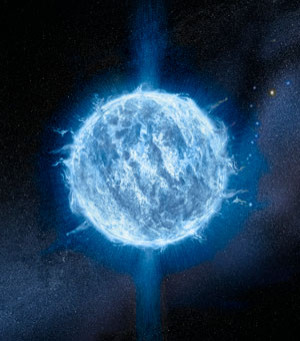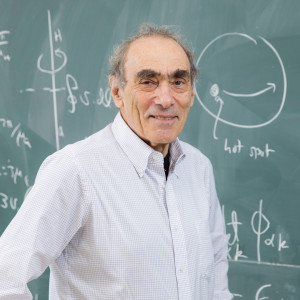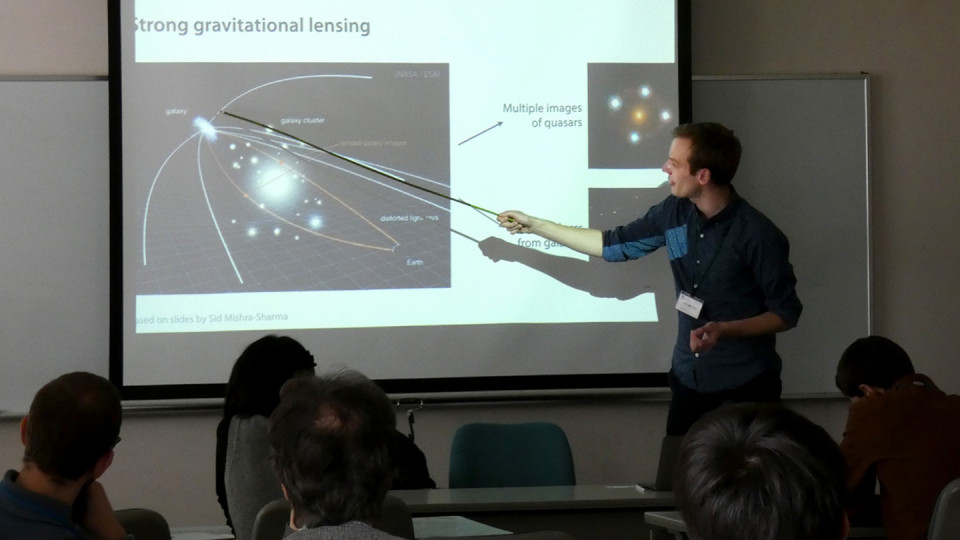Volume 90
Back to Newsletter List
Research News
Modeling the insides of a neutron star -- Improvements to a model for the inside of a neutron star make it applicable to neutron star mergers
2020-02-19
RIKEN astrophysicists have developed an improved model for the interior structure of neutron stars that agrees well with observations. Unlike previous models, it can be extended to consider what happens when two neutron stars merge.
The collapsed remnants of giant stars, neutron stars are fascinating objects. They are a mere 20−30 kilometers in diameter but are nearly 400,000–600,000 times more massive than the Earth, which makes them incredibly dense.
Neutron stars are not uniform agglomerations of neutrons—like the astrophysical equivalent of a giant atomic nucleus containing only neutrons. Rather they have an onion-like structure. Theorists have been busy trying to model this internal structure based on quantum mechanics and data from observations.
Seminar Report
Boosting the lensing study for DM properties with machine learning techniques
2020-02-17
Strong lensing of the galaxy, which can be seen as arc-like features, is a powerful probe of the small-scale DM halos. The populations of small-scale DM halo give us hints about its particle properties. We need to manage huge parameter spaces (e.g. redshift distribution of the source galaxies, lensing galaxies, mass functions of perturbing subhalos and so on) to determine the subhalo signatures from the strong-lensing image data using likelihood ratio test. The machine-learning based techniques of the reduced likelihood ratio estimator enable us to derive the parameters of subhalo mass function, which are key quantities to access the nature of DM, in an efficient way. The importance of this technique increases for the coming era of large-sized lensing image data. In the near future, we should probe the parameters of the subhalo mass function hence the DM properties from galaxy-galaxy lensing. Furthermore, the method is so flexible that encourages us to consider much wider applications in DM search.
Mining for Dark Matter substructure: Learning from lenses without a likelihood
February 17 (Mon) 14:00 - 15:30, 2020
Upcoming Events
Seminar
iTHEMS Math Seminar
Index of the Wilson-Dirac operator revisited: a discrete version of Dirac operator on a finite lattice
February 25 (Tue) 16:00 - 18:10, 2020
Mikio Furuta (Professor, The University of Tokyo)
The Wilson-Dirac operator is a discrete version of Dirac operator defined on regular lattices. When the discrete version is a fine approximation of the Dirac operator on a Z/2-graded Clifford module on a torus, it is known that (1) an integer-valued index is defined for the Wilson-Dirac operator, and (2) the index is equal to the Atiyah-Singer index of the Dirac operator on the torus.
These have been well established up to around 2000. The strategy of all the previous works is to make use of the discrete version of the heat kernel for Neuberger's overlap Dirac operator. Therefore the strategy cannot be generalized to mod 2 index nor family version of index.
In this talk I would like to explain a new approach to the index of Wilson-Dirac operator which can be immediately generalized to these various cases.
Joint work with H. Fukaya, S. Matsuo, T. Onogi, S. Yamaguchi and M. Yamashita.
Venue: Seminar Room #160, 1F Main Research Building, RIKEN
Event Official Language: English
If you would like to cancel your subscription or change your email address,
please let us know via our contact form.
Copyright © iTHEMS, RIKEN. All rights reserved.






